We spent two months exploring Morocco and its beautiful sites. We try to learn as much as we could about this fascinating country which resulted in this article Morocco Facts.
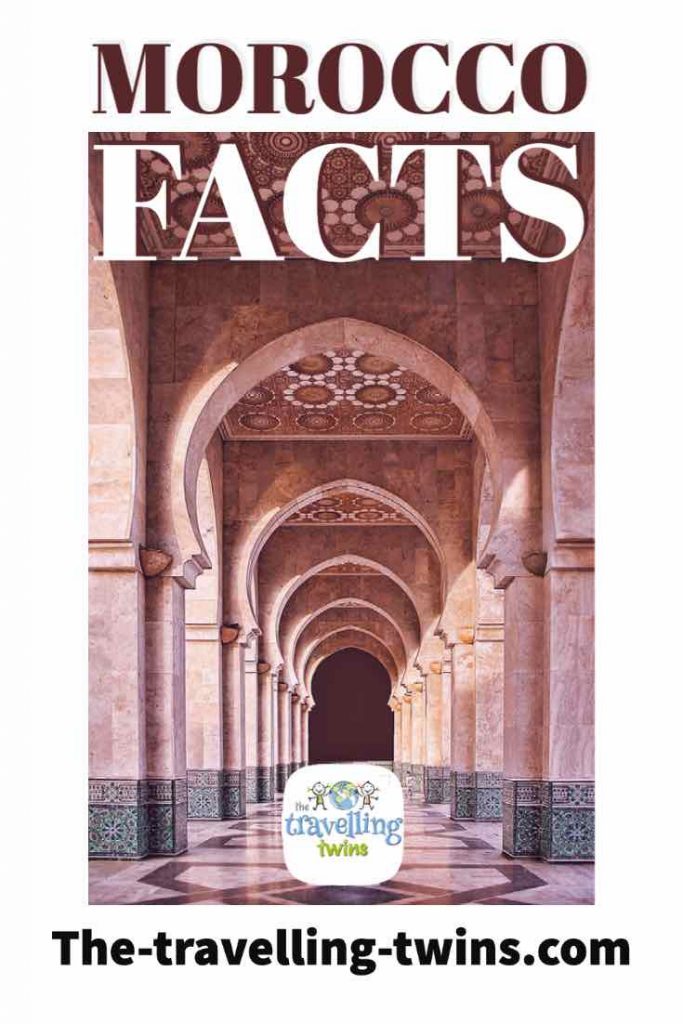
| MOROCCO QUICK FACTS | |
|---|---|
| official name | Kingdom of Morocco |
| size | 710,850 km2 |
| population | 37 million people |
| official language | Arabic and Berber, but French and Spanish is widely spoken |
| capitol | Rabat |
| religion | 99% Islam |
| flag | Red with Green Pentacle |
| anthem | Cherifian Anthem النشيد الوطني المغربي (Arabic) ⵉⵣⵍⵉ ⴰⵏⴰⵎⵓⵔ ⵏ ⵍⵎⵖⵔⵉⴱ (Berber) |
| famous sites | Marrakech, Rabat, Essaouira, Volubilis, Fez |
Geographical facts about Morocco
- Morocco is located in the northwestern corner of Africa, with the Atlantic ocean on the west and the Mediterranean to the north of the country. You can divide Morocco into three parts – The green belt close to the sea, the Atlas mountains and the Sahara desert.
- Morocco is separated by only 8 miles from Europe, across the Strait of Gibraltar. On a clear day, you can see Spain while you are sipping coffee in a coffee shop in Tangier.
- Morocco is home to the highest peak in Morocco, and in the whole of Africa, Jebel Toubkal in the high Atlas Mountains at 13,665 feet (4,165 m). There is as well located the highest ski resort in Africa.
- Morocco is home to the biggest hot desert in the world – the Sahara Desert
- Morocco has 10 rivers with the longest being Draa river which is impressive 1100 km long ( 684 miles)
- Morocco has access to the Atlantic Ocean and the Mediterranean Sea as one of the only three countries – two other are Spain and France.
- Morocco has a border with Algeria to the south and west, with Western Sahara to the south and 18,5 km border with Spain with three small Spanish controlled territories in Morocco – Ceuta and Melilla and Peñón de Vélez de la Gomera
- The Lowest point in Morocco is Sebkha Tah. Located near the Atlantic Ocean in the extreme south of the country, it is a 250 sq km depression down to a maximum of 180 feet (55 m) below sea level.
- The capital of Morocco is Rabat, not Marrakesh (the Red City) which is the most popular destination in Morocco
Morocco – The Nation, its Language and Symbols
Morocco’s formal name is Al Mamlakah al Magribiyah or the Kingdom of Morocco
Flag of Morocco
Morocco’s flag since 1912 has a green pentacle known as Solomon’s Seal in the centre of a red field. The pentacle signifies the five pillars of Islam. It represents a nation in the service of God. Red and green are common colours for Arab flags – the red of the Moroccan flag is traditionally dyed with the leaves of the native canna plant, a relative of the daisy.
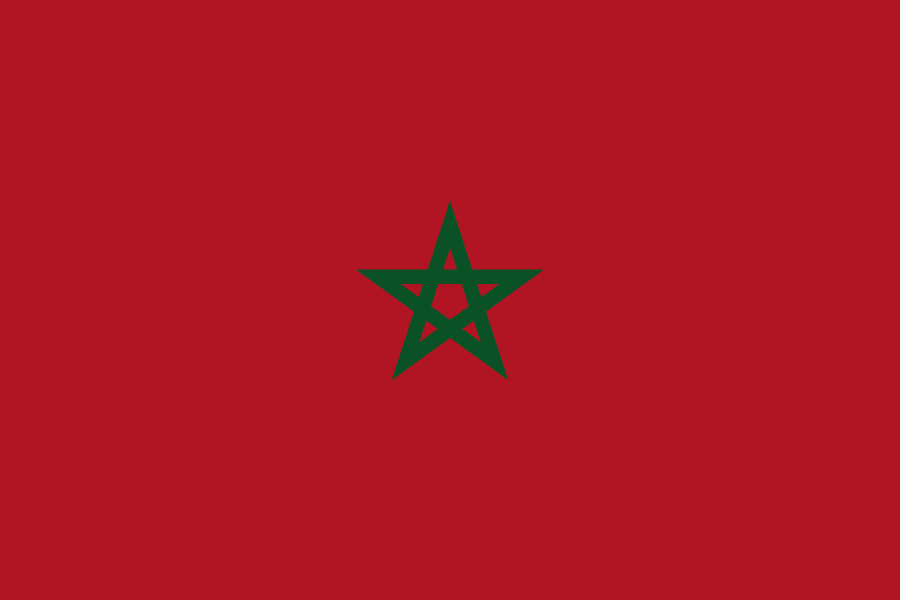
National Symbol of Morocco
Barbary Lion which are the national animal of Morocco are future on Morocco’s coat of arms. Moroccan Motto says “Akuc, Amur, Agllid” (“God, Homeland, King“)
Morocco official Language
Morocco has two official languages: Arabic and Amazigh (Berber). French is the almost universal second language and is used for many place names and signs.
Adult literacy increased from 30.3 % in 1982 to 71.7 % in 2015 (latest available figure) growing at an average annual rate of 16.14 %. (https://knoema.com/) School is mandatory for children from 7 to 15 but attendance is impractical for some children in rural areas and is not generally enforced. 91% of boys and 88% of girls attend primary school, for secondary school the figures are 38% boys and 36% girls (source Unicef latest available figures 2008-2012 https://www.unicef.org/infobycountry/morocco_statistics.html)
A Brief History of Morocco
History first mentions the land that is now Morocco in about 1,000 BC when the Phoenicians arrived from the eastern Mediterranean for trade. In 146 AD after the Romans had captured the Phoenician capital of Carthage, Morocco became part of the Roman Empire until the fifth century.
In 705 after twenty years of Arab raids, Morocco came under Islamic control and Arabic Morocco went on to conquer southern Spain. The region sub-divided into smaller kingdoms, one of which was ruled by Idriss the first. Idriss and his son Idriss II formed an alliance with the Berbers in the North around Fes in 789, and he is now known as the founder of Morocco.
Fez
From the eleventh to the beginning of the 20th century Morocco was a strong country trading from the Sahara and Sub Saharan Africa with the world and was ruled by a succession of Berber or Arab dynasties.
In 1912 Morocco become a French protectorate. The French declared Rabat as the capital city of Morocco 1913 because Morocco had no fixed capital at the time.
Morocco gained independence from France in 1956, when Sultan Mohammed V declared Morocco as a constitutional monarchy and assumed the title of King in 1957. The present king: Mohammed VI is the great-grandson on Mohammed V and was crowned in 1999, continuing the Alaouite Dynasty which came to power in 1666.
Today, Morocco is a fast developing country. The main industries are tourism and textiles. Its population is 34 million.
Modern Moroccan Politics
After the death of King Hassan II in 1999 Morocco is ruled by his son Mohammed VI, who introduced social and economic changes after his father’s strict rule and poor human rights. King Mohammed VI is the chief of the military
Saad-Eddine El Othmani is the current prime minister of Morocco. Prime Minister is chosen by the King from the largest and strongest party in the parliament.
Facts about Food and Drink in Morocco
Morocco’s national drink is Tea. This tradition dates back to the 19th century, when British merchants were blockaded from Landing, and had to offload their cargoes.
Mint tea – Green tea brewed with a handful of fresh mint leaves is the most popular drink in the country. It is drunk without milk and traditionally poured back from the cup to the pot two or three times before the last pour, with the pot held high so the stream splashes into the cup with bubbles. Tea is offered as an act of hospitality and it is impolite to refuse.
Couscous is a common dish, often steamed over a stew of meat and vegetables. It is a sacred meal on Friday and is being prepared in almost every house. Meat may be served covered by a pyramid of couscous with vegetables pressed into the sides and garnished with sweet raisins.
Eating with the left hand is considered ‘unclean’. Rejecting an offer of meat may be insulting as it can be interpreted to suggest that the host cannot afford to offer it.
The characteristic shallow earthenware cooking pot with a conical lid seen in Morocco is the Tagine. The name refers to the pot which is used both for cooking and serving and to the slow-cooked contents. A Tagine will include meat or fish, potatoes, vegetables and Moroccan spices with lemon and olives. A traditional tagine is both dairy free and gluten free.


Moroccan export food
- Tangerines – One of Morocco’s main exports is tangerines. Tangerines are named after Tangier on the north coast.
- Sardines – Morocco is the world’s largest exporter of sardines.
- Dates – Morocco exports more than 90,000 tons of dates each year.
- Cannabis – Hashish is grown in the Mountains. Morocco is one of the largest supplier of Hashish in Europe – it may supply up to 80%. We were offered it a few times while on the beach in Essaouira, but we refused. Punishment for being caught with drugs is 10 years in prison. Most cannabis is grown in Kif Mountains (around Chefchouen) and hashish in there is being called “Kif from the Rif”
- Moroccan wine – The ancient Roman practice of winemaking was revived under the French protectorate after an 1,200 year break owing to the establishment of Islam. With independence in 1956, the vineyards came under state control and then were privatised again in the 1990s.
Facts about Tourism in Morocco
Tourism is very important for Moroccan economy it accounts for almost for 20% of Moroccan GDP. The strongest industry is located around the coast – Agadir, Imsouane – a paradise for Surfers, Essaouira and around cultural and historical towns which quite often are enlisted on UNESCO World Heritage Sites
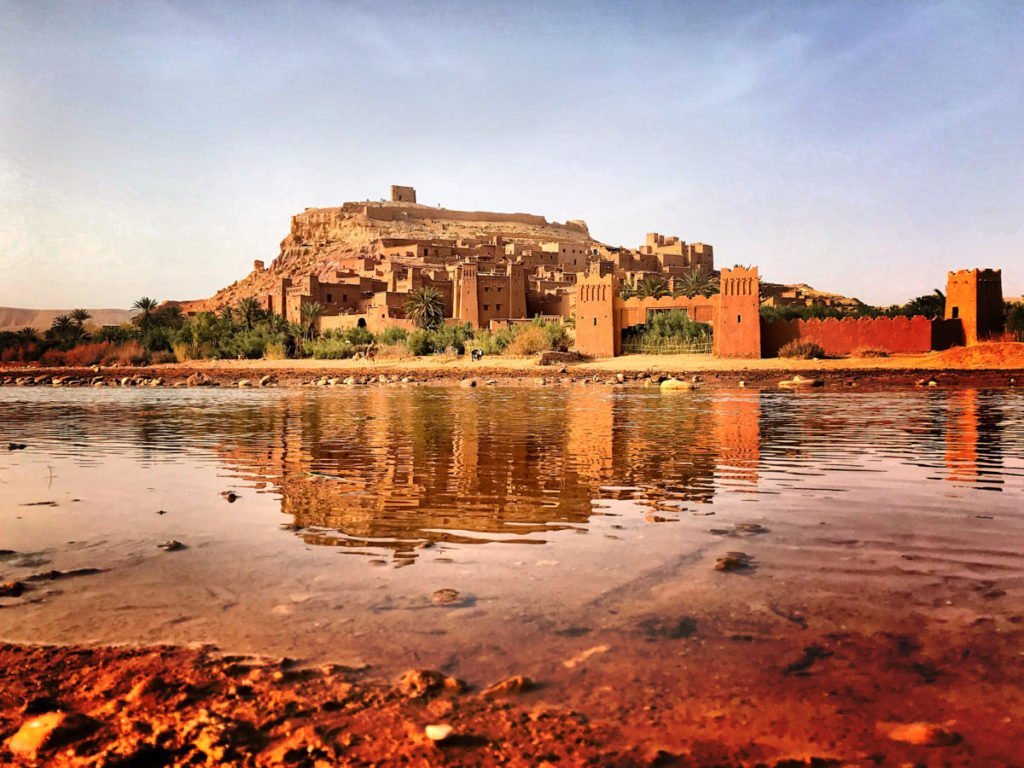
Morocco has Nine World Heritage Sites:
- Archaeological Site of Volubilis (1997)
- Historic City of Meknes (1996)
- Ksar of Ait-Ben- Haddou (1987)
- Medina Essaouira (2001)
- Medina of Fez (1985)
- Medina of Marrakesh (1985)
- Medina of Tetouan (1997)
- Portuguese City of Mazagan – El Jadida (2004)
- Rabat, Modern Capital and Historic City: a Shared Heritage (2012)
Facts about Morocco Culture
- Film – Ouarzazate is known as Morocco’s Hollywood. It has two film studios, and Atlas Studio is said to be the second-largest film studio in the world. Quite a few episodes of Game of Throne were shoot in Morocco.
- Casablanca is the largest city in Morroco and the title of one of my favourite movies. Casablanca (the movie) was shot in Warner Bros studios in California, but you can still visit Rick’s Bar in Casablanca (the city). It is built to resemble Rick’s bar from the movie.
- Morocco was the first country which in 1777, recognized the United States as an independent nation.
- Jews in Morocco – Morocco is joined only by Egypt in the Arab world in encouraging friendly relations with Israel. Until 1948 Morocco had around 300,000 Jews. Soon after Israel become an independent country Jews started leaving Morocco – now their population here is less than 2,000. Around Ait Benhaddou you can still spot lots of David’s stars on doors, window shutters or kettles.
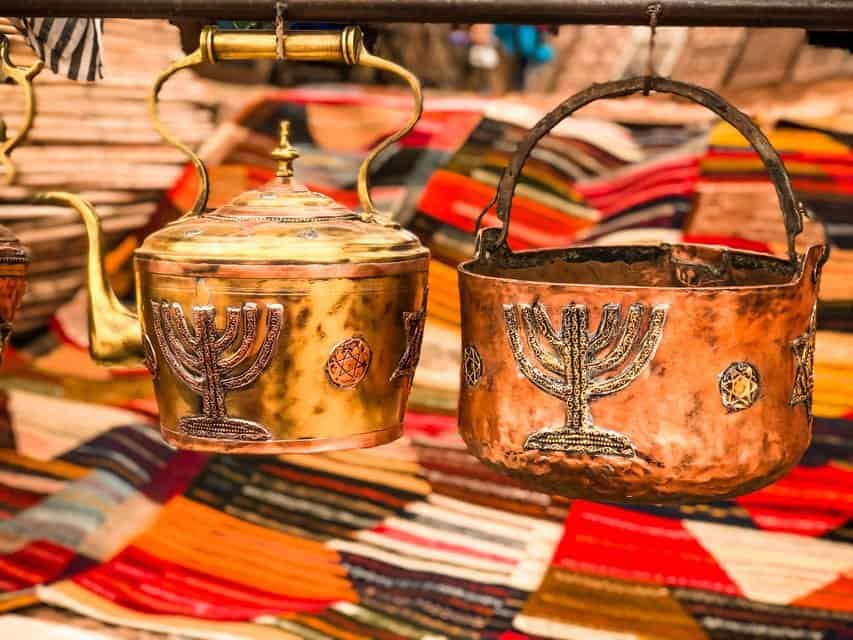
- Tangier located on the Strait of Gibraltar, is the oldest city in Morocco founded almost 3,000 years ago.
- Fez Medina founded in about 800AD is the world’s largest ancient city still active today.
- Chefchouen is famous for its blue houses. Jewish residents painted them this colour because they believed it kept the mosquitoes away.
- Moroccan cities with medinas (old medieval sections) often include Mosques,Hammams (steam baths) Suqs (Markets) Bazaars (Old shops) and Kasbahs (old fortresses).
- Old Moroccan buildings are traditionally built of adobe (sand, straw, manure, and clay) brick and stone. Some villages still have no piped water or mains electricity.
- Surface decorations may include stucco – a mixture of plaster with marble dust. This is polished and may either be ornately carved or inlaid with ceramic tiles in Islamic patterns. Marble was imported to Morocco from Italy in exchange for sugar.
- The Hassan II Mosque in Casablanca is the 7th largest Mosque in the world. Its as well the only Mosque in Morocco which non-muslim can visit.
Famous Moroccans
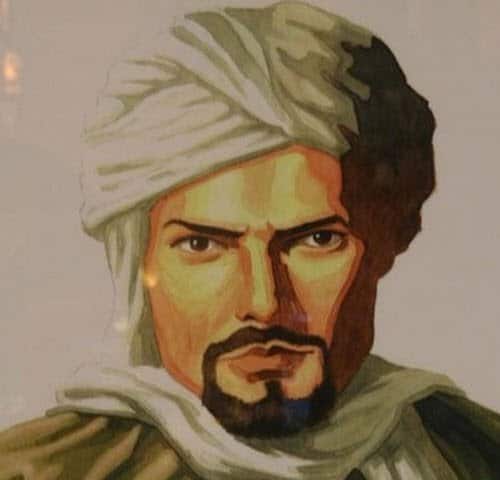
Ibn Battuta
Ibn Battuta (1304-1369) the great Explorer and Geographer who travelled as far east as Beijing and through countries as far apart as modern Bulgaria, Malaysia, Kazakhstan, Tanzania and Guinea – was Moroccan, from Tangier.
Muhammad al-Idrisi
Al – Idrisi born around 1100 CE was and geographer and a cartographer. His maps were being used by Christopher Columbus and Vasco da Gama. He is as well known for the 400 kg silver sphere globe which he made for King Roger II of Sicily
Jean Reno
Jean Reno – famous French actor was born in Casablanca and lived here till age of 17th to Spanish parents who left Spain to Morocco in search of better life.
Famous people who visited morocco
During the 1950s and 60s, Morocco attracted foreign writers, William S. Burroughs, Jack Kerouac, Allen Ginsburg, Tennessee Williams and others all worked here. Paul Bowles lived in Morocco for more than 50 years
Jimi Hendrix visited Essaouira and there are lots of urban legends connected with this visit – for example, that he wanted to buy property, or that he wrote a song there. However, History reveals that he stayed only 3 days in Esssaouira and didn’t even bring his guitar.
Morocco Superstitions
Witchcraft in Morocco – At most country markets in Morocco, witches dispense curses and potions. Most towns also have fortune-tellers who can reveal the unknown or foretell the future. Shawafas (witches) are still very often consulted in matters of marriages, love and health issues.
Evil Eye Similar as in Greece Moroccan are believe in evil – eye (al-ayn). To protect from other people evil eye you can were with you a talisman that resembles hand with eye drown in the middle. Its a very popular souvenir to get from Morocco.
Jinns – Moroccan believe in Jinns (Djinns) – bad spirits which quite often hide in drains, ruins, toilets or desert, because of that we were warned not to visit the toilet after 11 pm.
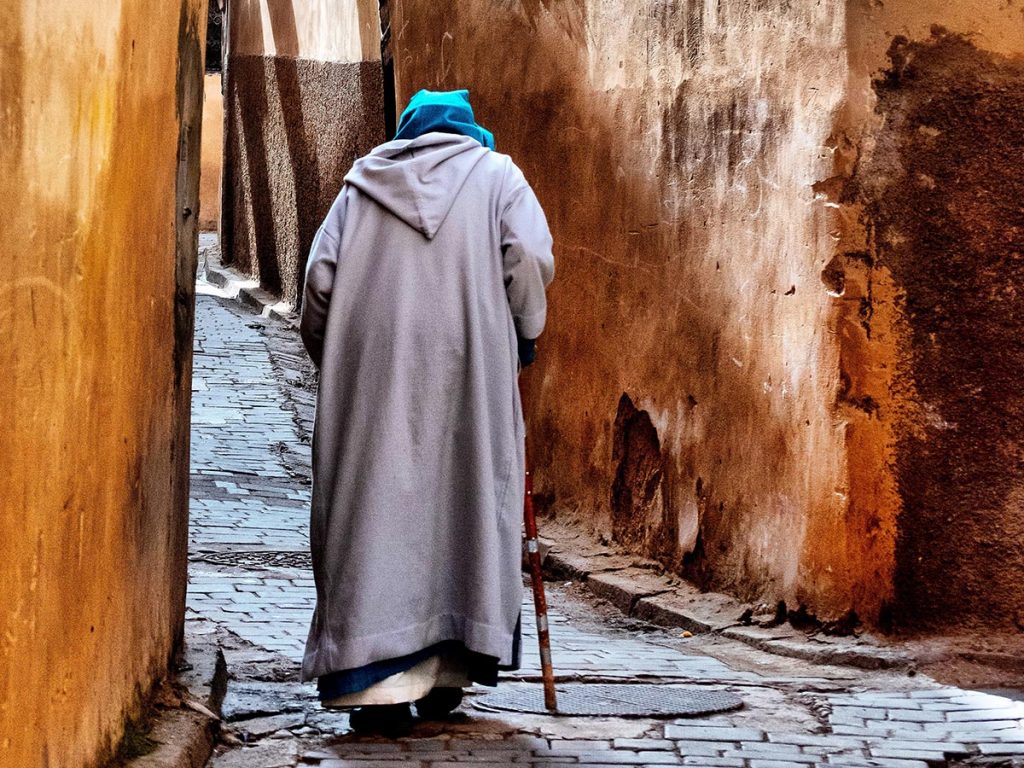
Facts about Moroccans Dress and Customs
- The djellaba is the Moroccan national costume. It is a full-length shirt with an integral large pointed hood worn by both sexes. They may be seen in both light and heavy fabrics and both plain colours and stripes.
- Djellabas are a statement of conservatism for both rich and poor people, though they may be tailor-made with ornate stitching especially of the seams. Men’s Djellabas are sewn by male tailors, while the female version can be made either by men or women.
- A Moroccans widow wears white in mourning for 40 days after her husband’s death. White is, however, a common colour for both genders to wear. Red is considered to be a woman’s colour.
- Head covering for ladies is not obligatory. It’s a decision for the woman and her family whether she wants to wear hijab or not. Many women start covering their hair after marriage.
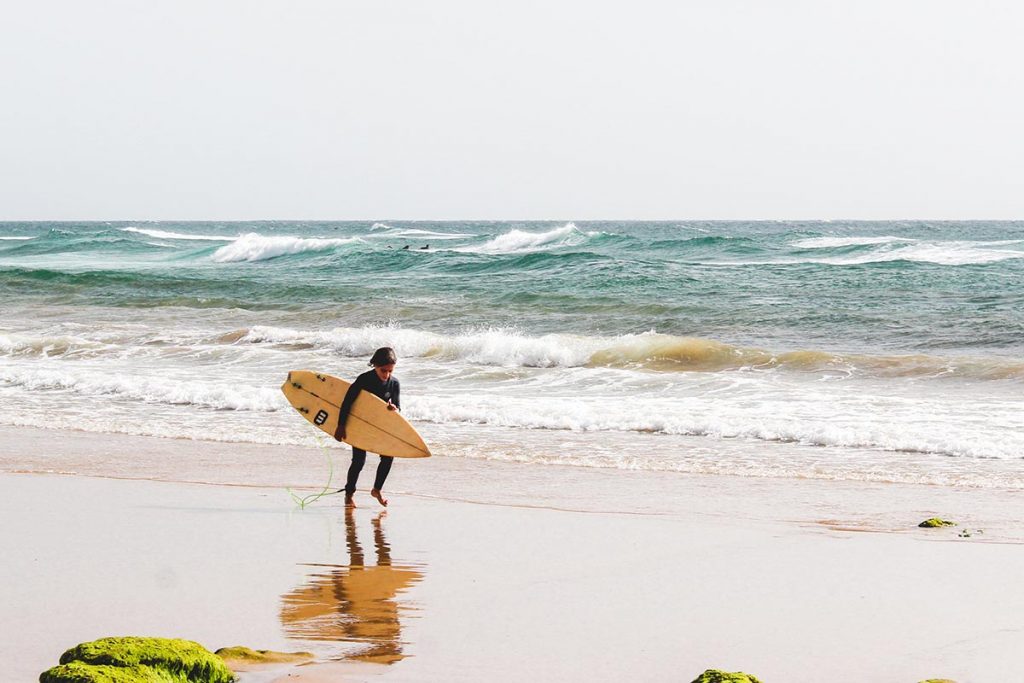
Morocco Sports
- Soccer is Morocco’s most popular sport. You can see young men playing it everywhere.
- Water Sports are very popular in Morocco. Morocco has some of the best surfing north of the Sahara.
- Another popular activity in Morocco is Equestrian sports, which is a mixture os dressage, jumping and fantasia, which is performance on horses done during cultural events and wedding celebration.
Interesting Morocco Facts – Pin it for later



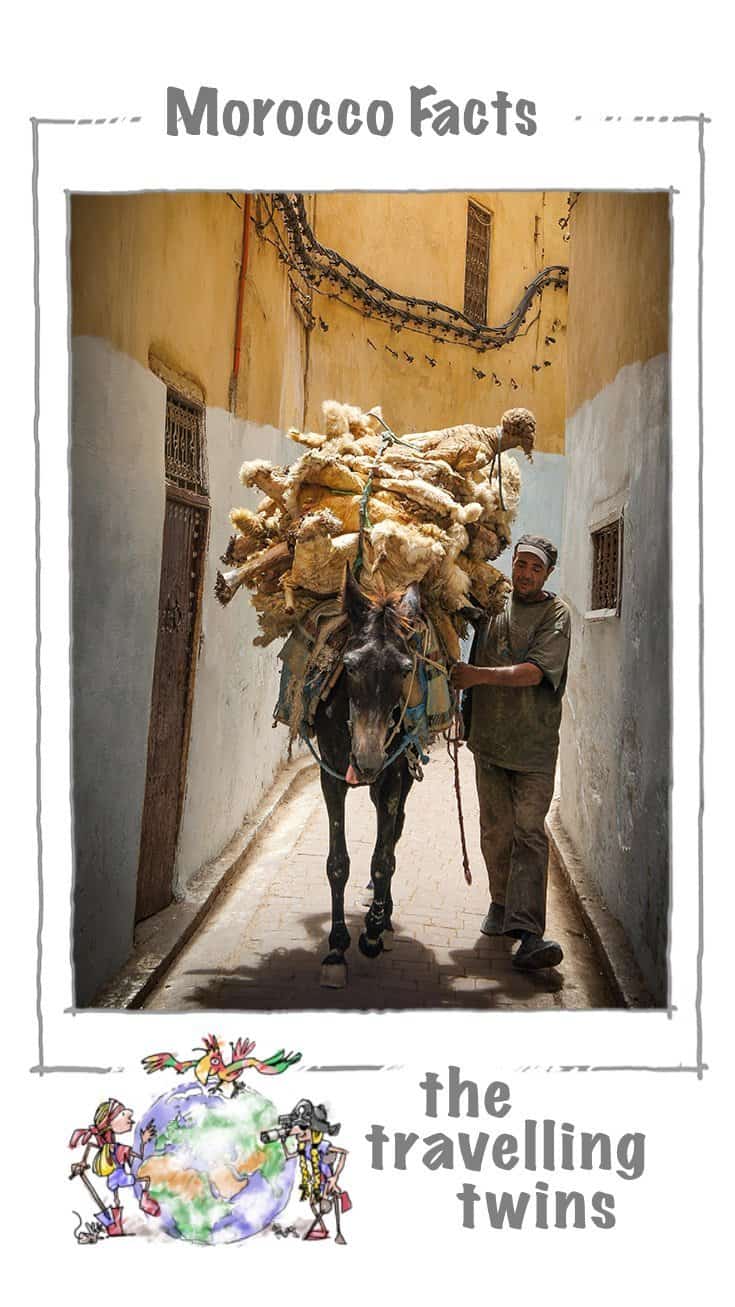
Privacy Policy Disclaimer
This website uses affiliate links for income and support.
If you like our website, please consider using these links. You will be directed to the vendor, and we will get a small commission on your purchase price at no increased cost to you.
We have researched facts stated here as far as practicable but please check anything critical before committing your time and money. We do not claim any special knowledge or expertise, and we are not consultants for our readers.
References used in this Collection: